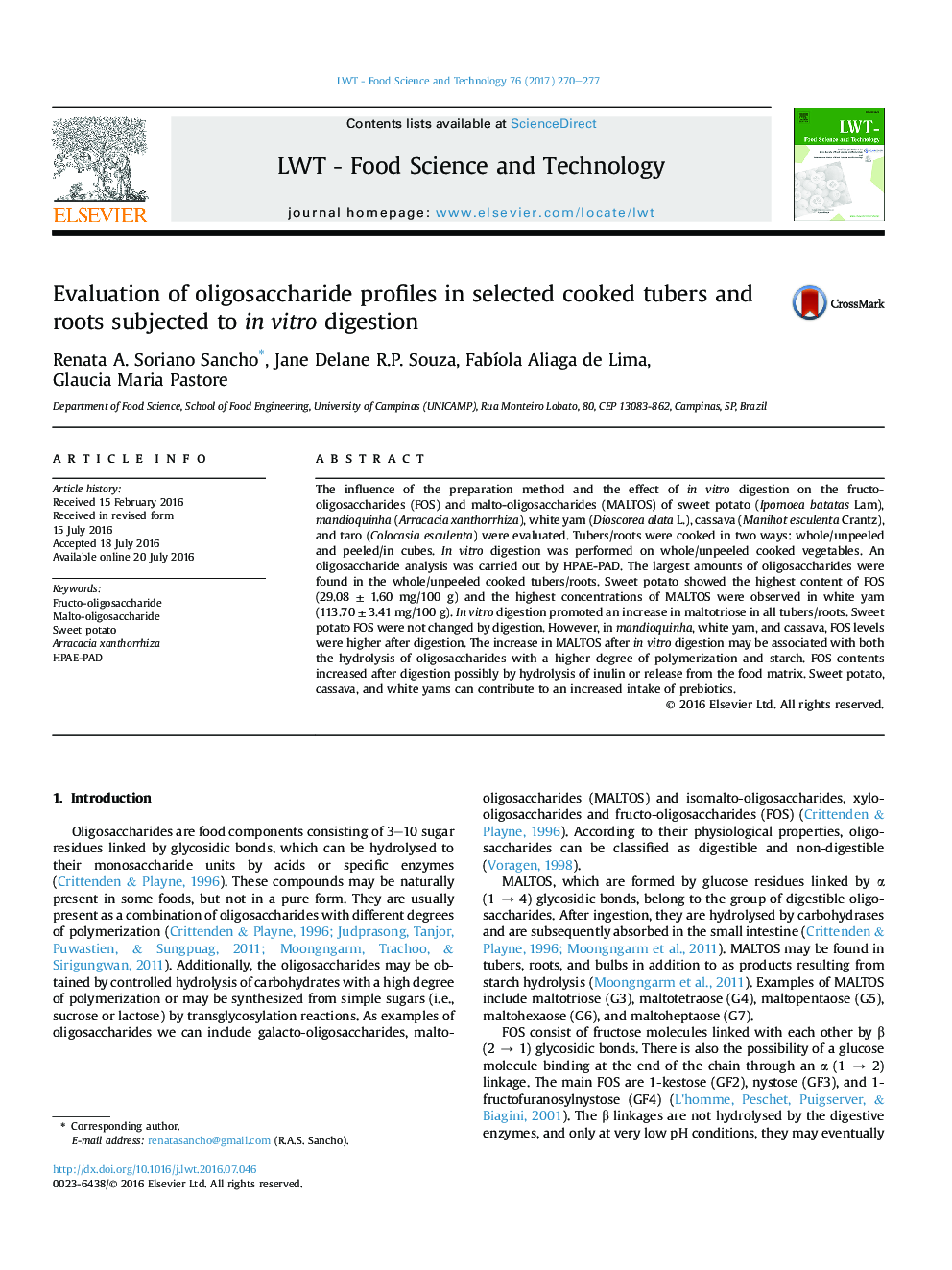| Article ID | Journal | Published Year | Pages | File Type |
|---|---|---|---|---|
| 5769119 | LWT - Food Science and Technology | 2017 | 8 Pages |
â¢Oligosaccharides of selected cooked tubers/roots were determinated.â¢Fructo- and maltooligosaccharides were evaluated before and after in vitro digestion.â¢Fructooligosaccharides contents increased after digestion.â¢In vitro digestion increases the maltotriose content in all tubers/roots evaluated.
The influence of the preparation method and the effect of in vitro digestion on the fructo-oligosaccharides (FOS) and malto-oligosaccharides (MALTOS) of sweet potato (Ipomoea batatas Lam), mandioquinha (Arracacia xanthorrhiza), white yam (Dioscorea alata L.), cassava (Manihot esculenta Crantz), and taro (Colocasia esculenta) were evaluated. Tubers/roots were cooked in two ways: whole/unpeeled and peeled/in cubes. In vitro digestion was performed on whole/unpeeled cooked vegetables. An oligosaccharide analysis was carried out by HPAE-PAD. The largest amounts of oligosaccharides were found in the whole/unpeeled cooked tubers/roots. Sweet potato showed the highest content of FOS (29.08 ± 1.60 mg/100 g) and the highest concentrations of MALTOS were observed in white yam (113.70 ± 3.41 mg/100 g). In vitro digestion promoted an increase in maltotriose in all tubers/roots. Sweet potato FOS were not changed by digestion. However, in mandioquinha, white yam, and cassava, FOS levels were higher after digestion. The increase in MALTOS after in vitro digestion may be associated with both the hydrolysis of oligosaccharides with a higher degree of polymerization and starch. FOS contents increased after digestion possibly by hydrolysis of inulin or release from the food matrix. Sweet potato, cassava, and white yams can contribute to an increased intake of prebiotics.
